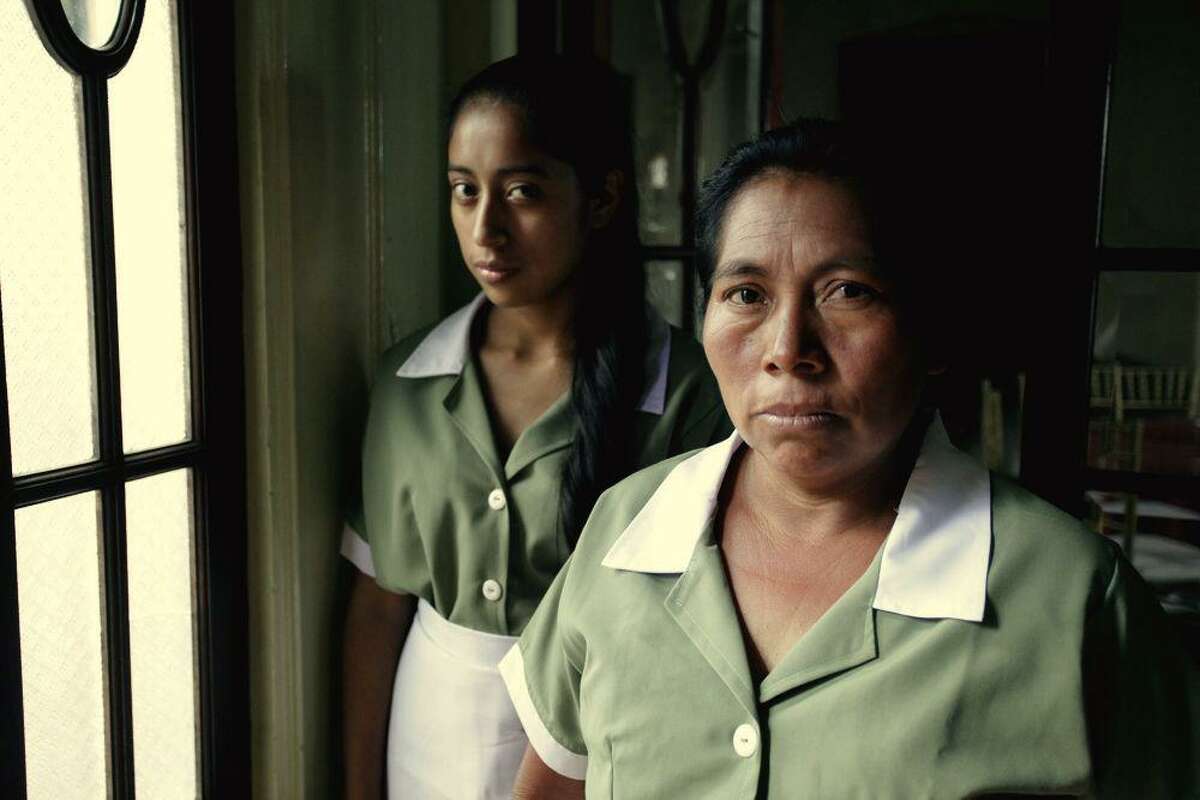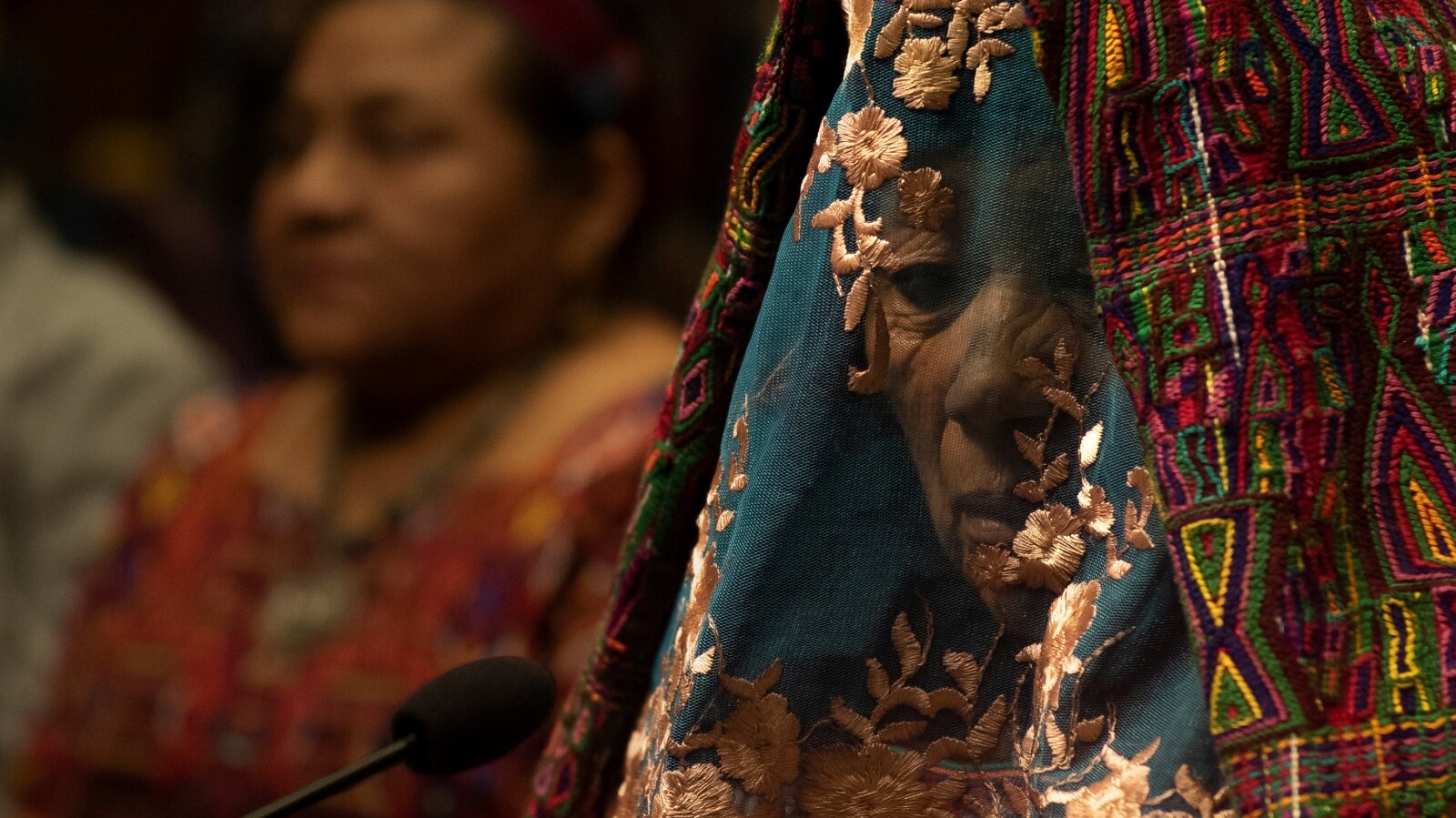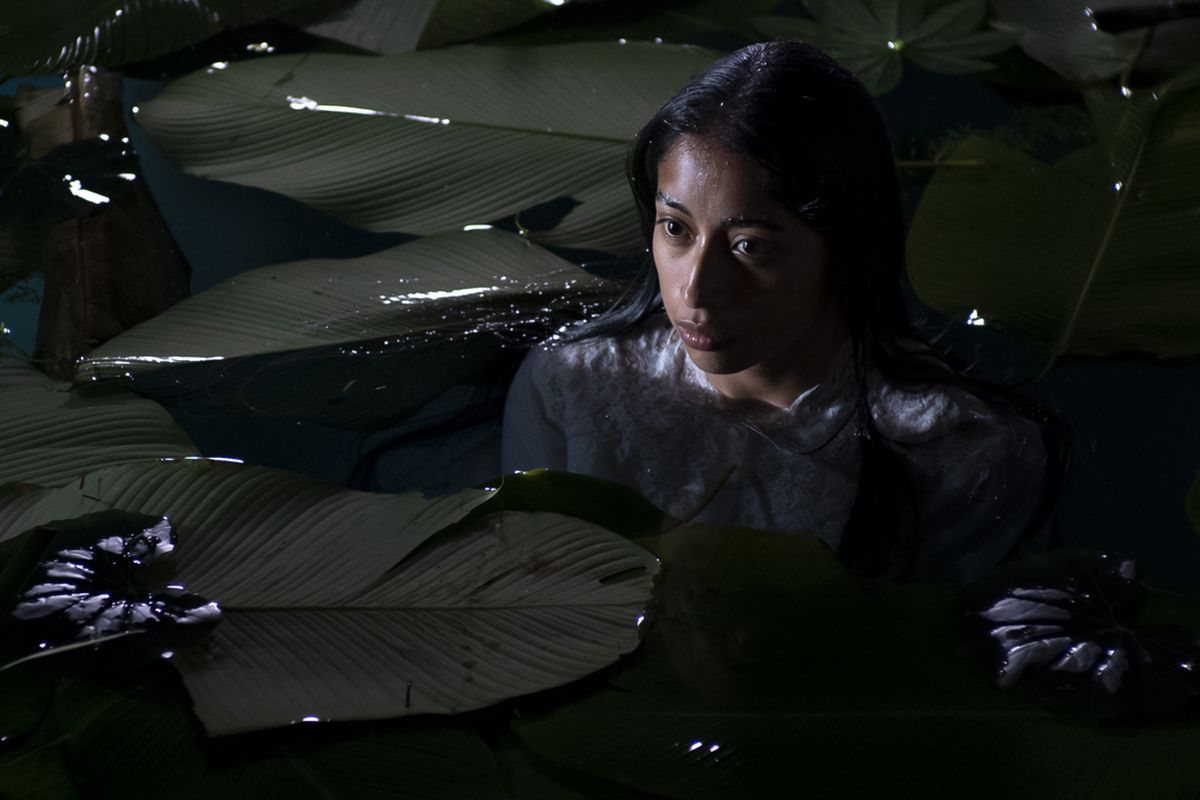
The Haunting Memories of La Llorona (Jayro Bustamante 2019)
This week Mediático is delighted to present an excellent post by Maria Chiara D’Argenio exploring Jayro Bustamante’s political horror movie La Llorona (2019) which was recently nominated for a Golden Globe but has to the disappointment of its many fans just missed out on a nomination for an Academy Award. Dr D’Argenio is a Lecturer at University College London, where she teaches Latin American cinema, visual culture and literature. She is currently co-editing a volume on Latin American magazines (University of Florida Press) and writing a monograph on the representation of indigenous cultures in twenty first-century Latin American cinema (Palgrave Macmillan).
The Haunting Memories of La Llorona (Jayro Bustamante 2019)
by
Maria Chiara D’Argenio
Four years after the multi-award-winning Ixcanul (2015), Jayro Bustamante and his La casa de producción return to the theme of the Guatemalan state’s wrongdoing towards its indigenous populations with the film La Llorona, a political horror movie that re-works the homonymous Mesoamerican legend to tackle the country’s 1980s indigenous genocide. This Guatemalan-French coproduction features Ixcanul’s actresses María Mercedes Coroy and María Telón, as well as Margarita Kenéfic and Sabrina De La Hoz (who both appear in Bustamante’s second feature-length film Temblores (Guatemala/France 2019). Co-written with Lisandro Sánchez, La Llorona has been well received by film critics as well as the festival circuit, and awarded prizes at Venice, Havana and Bergen festivals, among others; this year, it is competing at the Goya and the Golden Globes. It was selected as Guatemala’s official submission for the 93rd Academy Awards, but sadly missed out on a nomination.
Unlike Ixcanul, the mise-en-scene of La Llorona focuses on a ladino* family from the social and political elite. Ixcanul’s earthy landscapes surrounding the Pacaya volcano are now replaced by claustrophobic domestic interiors, which occupy most of the shots. Inspired by the real labyrinthine trial of former Guatemalan Dictator Efrain Ríos Montt within the context of the country’s internal conflict (1960-1996), the film’s plot centres on the wealthy family of retired General Enrique Monteverde (played by Julio Díaz) in the days after his trial for human rights violations. In the early 2010s, once retired from politics, Ríos Montt was accused of genocide for the abuses against the Maya populations committed during his 17-month presidency in 1982-3. The Ixil population was the most affected. Ríos Montt was sentenced to fifty years in prison in the early 2010s, but the sentence was soon annulled by Guatemala’s Constitutional Court. A retrial took place in 2015, but Ríos Montt died before a verdict was reached. Echoing the real events, the fictional Monteverde stands trial and is declared guilty of genocide, but the sentence is annulled and he returns home with his family. The long take of the trial sequence is a powerful one: an Ixil woman (witness n. 82), positioned at the centre of the frame in close-up and facing the camera, tells her story of abuses at the hands of the Army in her native language, foregrounded by the lack of subtitles. As the court interpreter translates her words into Spanish, the camera pulls back slowly and the frame widens showing the large public seated in the courtroom: indigenous people, female victims, activists, as well as Monteverde’s relatives. The well-known human rights activist Rigoberta Menchu, who has supported La casa de producción’s work on several occasions, also appears in this scene. In a symbolic gesture, the female witness lifts briefly her t’zute veil when she asks the court for justice. Bustamante has explained that this scene was inspired by the trial of the Sepur Zarco case, where a number of women victims testified wearing a t’zute veil (in the film the veil is transparent for cinematic purposes), which they lifted at the end of their testimony saying ‘If we are not ashamed of telling what we lived through, we hope you are not ashamed of doing justice.’ (Aguilar 2020)

However, the film deals mostly with what happens after the trial, when Monteverde’s family becomes trapped in their house, besieged by protesters who demand justice. The domestic environment becomes a haunted space. At night, Monteverde hears a weeping female. While his relatives dismiss this as a hallucination, the indigenous domestic servants immediately identify it as the crying of La Llorona, the murderous mother who, according to the legend, was abandoned by her lover and killed their children, and was then condemned to wander eternally in the afterlife. Knowing that the cry anticipates the ghost’s arrival, most of the indigenous servants resign except for Valeriana (María Telón), the house maid who is considered part of the family. Valeriana hires a new maid whom she thinks is from her village. Alma (played by María Mercedes Coroy) is an enigmatic character; she barely speaks and embarks on mysterious nocturnal walks. Her entrance turns the house into an uncanny space: frogs appear in the pool; water leaks from unopened taps; weeping voices are heard coming closer; joyful children’s games turn into threatening events. The audience quickly understands that Alma is the embodiment of La Llorona, who has come to seek justice for her children and the many other victims of Monteverde’s actions.
Although the character of Monteverde is central to the plot, he is actually quite marginal in the mise-en-scene, which instead foregrounds the women surrounding him as well as their reactions to the events. Monteverde’s daughter Natalia (Sabrina De La Hoz) questions the image she has always had of the family and the country’s history; her mother Carmen (Margarita Kenéfic) is haunted in her nightmares by the crimes perpetrated by her husband and will end up exposing his immoral lascivious behaviour while still holding firmly to her class privileges; his granddaughter Sara (Ayla-Elea Hurtado), Natalia’s child, establishes an immediate alliance with the indigenous Alma. Foregrounding women is not a new choice for Bustamante, but in this film the focus is also on the three generations: that of the complicit upper classes who, as Bustamante has claimed, ‘have lost empathy’; that of the people who were children and have not engaged with the country’s past; and that of the younger generations who, the filmmaker claims, should ‘open those doors and […] do what we could not do’ (Aguilar, 2020).

This allegorical representation discloses the film’s political aim. Indeed, the message of La Llorona is quite straightforward: the film questions the politics of accountability in relation to indigenous suffering and emphasises the social responsibility that should shape Guatemalan citizenship. The ways it crafts these issues of accountability and social responsibility, though, are quite interesting. The film creates a witnessing spectator via its narrative and aesthetics. Bustamante and his team seems to see memory as a duty (political, social, ethical and moral); through their postmemorial connection to the past via the ‘imaginative investment’ (Hirsh 2012, 5) of the film’s haunting spectrality, they present trauma as an issue of both lived experience and narrative, that is, ‘of telling and listening’ (Elsaesser 2001, 196).
Two of the film’s key aesthetic features are its use of the horror genre and its sound design. Unlike other films that have travelled the film festival circuit, La Llorona combines art-house aesthetics with horror conventions such as the presence of dangerous and threatening events or characters; the ‘promise that something hideous will occur’ (Sipos 2010, 5); and the ghost figure. The semi-darkness of the interiors and Nicolás Wong’s camera work of long takes and precisely composed shots of frames – windows, doors, bunkbeds – that conceal or enclose the bodies, contribute to the film’s uncanny atmosphere. While the choice of the horror genre might be seen as a metaphorical allusion to the atrocities of the genocide, it was in fact a strategic choice motivated by the will to reach a wide public, especially among Guatemalan youth. The team conducted market research and found out that the genre most seen in Guatemalan cinema was, precisely, horror. La Llorona was therefore marketed as a horror film; accordingly, in the UK, it has been distributed by the platform Shudder, which specialises the genre.
The sound design addresses the viewer’s sensorial perception. Starting with the crescendo of whispers of the opening scene, Eduardo Cáceres’s work (which earned him a prize at the Havana film festival) increases sound to hyper-realistic levels, making it unsettling and eerie while at the same time emphasising its corporeality. The acousmatic sound of the weeping voice or the amplified hitting and shouting of protesters pushing the ambulance carrying Monteverde, are defamiliarising ways of immersing the viewer in this story.
The only song of the film is heard at the very end and accompanies the credits. It is ‘La Llorona de los cafetales’, written for this film by the acclaimed Guatemalan singer Gaby Moreno, who has collaborated with Bustamante in this refashioning of the popular song ‘La Llorona’. Moreno turns the well-known narrative of love of ‘La Llorona’ into one of war and justice. The lyrics made famous by singers such as Rafael and Chavela Vargas are now rewritten as a story of collective suffering in a musical piece that seems to transform both the narrative of the song and that of the legend presenting La Llorona as a synecdoche of the ‘pueblo herido’. The video (above) of Moreno’s song has been directed by Bustamante and has circulated on the internet. It combines scenes from the film with images that are not part of the film, which nevertheless complement, perhaps even complete, the story of La Llorona while also illustrating the song’s lyrics. The song and video were arguably another strategy, designed to attract young Guatemalan and Latin American audiences. Hence, La Llorona is an interesting case of a film that combines the local with the global, the artistic with the commercial, and uses marketing and distribution strategies in the service of a political aim. La Llorona’s haunting spectrality suggests that the Guatemalan past is still an unfinished business, and wishes to interpellate the viewer as a witnessing spectator who, paraphrasing Ann Kaplan (2005), should not only feel empathy, but also interrogate the very structures of injustice that allowed as well as concealed the indigenous populations’ historical traumas.
*In Guatemala, the term ladino is used in the official census to refer to one of the two main ethnicities (the other being the Maya). For some, it is synonymous of mestizo, although ladino can also be understood as having a less fixed meaning and might include also those (few) people who would be defined as criollos in other regions. There also seems to be a consensus on that it usually refers to westernized people. Therefore ladino can be simply thought of as ‘non-indigenous ethnicity’ or ‘non-indigenous population.’
Aguilar, Carlos. (2020) ‘Crying for Justice: Jayro Bustamante on La Llorona’. Available at, https://www.rogerebert.com/interviews/crying-for-justice-jayro-bustamante-on-la-llorona
Elsaesser, Thomas (2001) ‘Postmodernism as Mourning Work’ Screen, 42: 2. 193–200
Hirsh, Marianne. (2012) The Generation of Postmemory: Writing and Visual Culture After the Holocaust (NY: Columbia University Press)
Kaplan, E. Ann. (2005) Trauma Culture. The Politics of Terror and Loss in Media and Literature (New Brunswick, N.J: Rutgers University Press)
Sipos, Thomas M. (2010), Horror Film Aesthetics: Creating the Visual Language of Fear (Jefferson, N.C: McFarland & Co)






